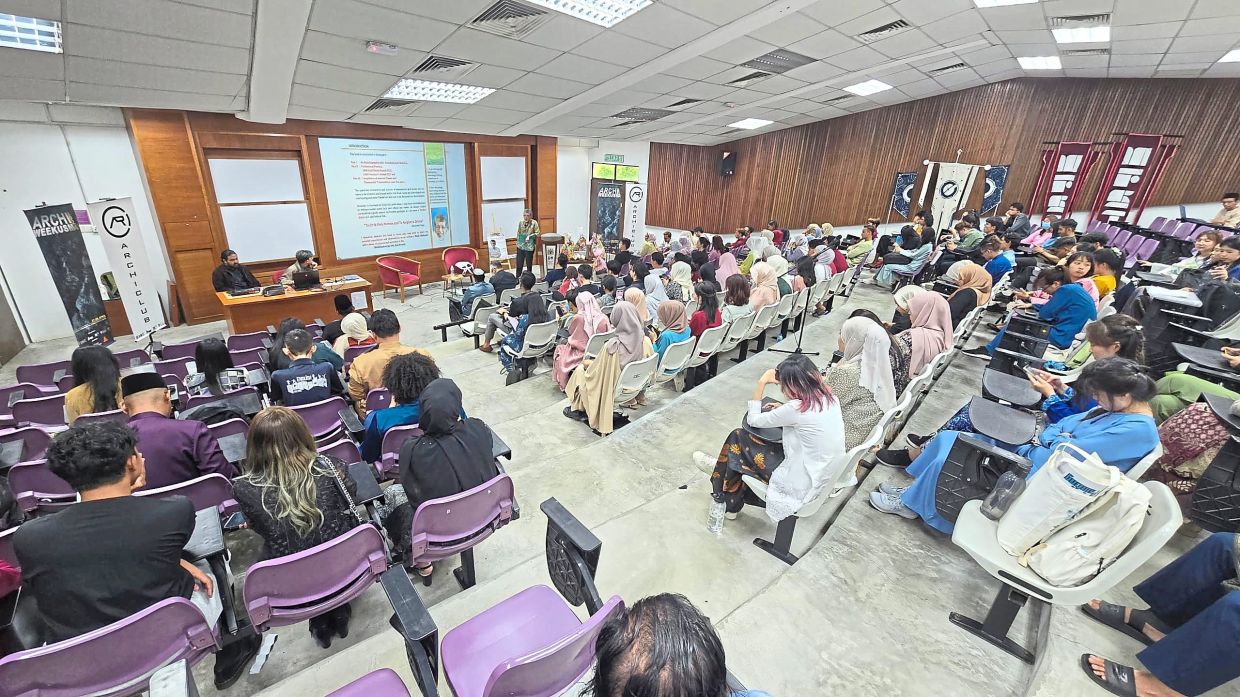Etiqa Twins, formerly known as MNI Twins, is one of Hajeedar’s many projects. Photos: Handout
Datuk Hajeedar Abdul Majid, a notable Malaysian architect, has made significant contributions to both modern architecture and heritage conservation. His architectural journey began during his childhood, nurtured by his strong love for art.
Despite early challenges in securing a scholarship, Hajeedar pursued his passion
in Britain, earning recognition for his work in Malaysia and abroad. A vocal advocate for local architects, Hajeedar opposes the reliance on foreign talent and stresses the importance of design accountability and professionalism in architectural practice.
His work remains rooted in strong ethical principles and dedication to Malaysia’s architectural identity.
A humble background
Growing up in post-war Kuala Lumpur, Hajeedar experienced the rich, multicultural envir-onment of the city, which sign-ificantly shaped his approach to architecture and design.
His early years in government quarters and living in Kampung Baru were a “free, easy and adventurous time”, exposing him to a unique blend of cultural identities and urban landscapes.
The diverse mix of colonial buildings, local shophouses, mosques and schools like Victoria Institution gave him a deep appreciation for Malaysia’s architectural heritage, influ-encing his ability to integrate historical and modern elements into his work. His upbringing in such a vibrant community provided him with a rich tapestry of life values as a Malaysian, where he truly understands architecture as a reflection of diverse cultural values and lifestyles, a philosophy he has carried throughout his career.
Architectural contributions
Hajeedar started his architectural practice in 1978 after spending five years with the Urban Development Authority (UDA). Over the years, he has worked on unique and challenging projects, designing 15 mosques in Bangsar, Cheras, Kemaman, Kerteh, Bukit Kayu Hitam, UIA Campus, Section 3 Petaling Jaya, and two suraus in Presinct 8 and 9 in Putrajaya.
Among his proudest achievements is the Grand Friday Mosque in the Maldives, completed in 1984, marking Malaysia’s first international venture in exporting local architectural expertise.
In the commercial realm, his firm was among the first Malaysian practices to utilise a Computer-Aided Design and Drafting (CADD) system when he started design work at Bank Pembangunan Headquarters in 1983. Subsequently, he went on to design MNI Twins (now known as Etiqa Twins), Darby Park, Dataran Maybank and a few hotels in Kota Baru, Kuala Terengganu, Cherating and Langkawi.
A passionate advocate for conservation, Hajeedar has campaigned for heritage preservation since the 1970s.
His independent efforts to restore and adapt the historic Chow Kit Department Store sparked a broader conservation movement, leading to the preservation of significant sites such as InfoKraf, the Kuala Lumpur Museum, Jabatan Agama Islam Wilayah Persekutuan building and Carcosa Seri Negara.
Through these endeavours, Hajeedar has played a vital role in shaping Malaysia’s archi-tectural landscape, blending modernity with a deep respect for history and culture.
Philosophy and vision
In the early years following Malaysia’s independence, architects faced the challenge of establishing a distinct Malaysian architectural identity.
When asked about the key elements that define Malaysian architecture today, Hajeedar notes there “was a conscious effort to ‘break away’ from the simplistic expression of local and tropical forms in architecture towards a more practical and economic building solution with higher quality ecological living environment”.
This transformation emphasises that Malaysian architecture today is defined not just by its aesthetic form-making but also by its commitment to sustainability and community wellbeing, showcasing a blend of tradition and modernity that reflects the nation’s identity.
In his autobiography, Hajeedar raises important concerns about the growing polarisation within Malaysian society, attributing this divide to exploitation and socio-political factors rather than to the multicultural fabric of the nation itself.
He believes that architecture can play a pivotal role in bridging these cultural and social divides. By fostering inter-racial and intercultural awareness, mutual respect and integration, architects can contribute to creating cohesive communities in the nation.
He firmly believes that “inter-racial and inter-cultural awareness acceptance, and mutual respect are the salient elements in a successful society, not the old colonial concept of ‘divide and rule’.
A strong, dynamic and integrated ethnic-cultural community must therefore be created in the nation.
Today, most developments are ‘profit-driven’, with some people living within their gated communities while the rest are ‘scattered’ anywhere available”.
Hajeedar’s vision of a united nation is a true inspiration to all Malaysians.
He is advocating for all Malaysian architects to mindfully design spaces that promote inclusivity and interaction among diverse ethnic groups, thereby building strong, dynamic communities that embrace their shared cultural heritage.
By moving away from colonial-era concepts of division, architecture can become a catalyst for unity, enriching Malaysia’s social landscape and encouraging a more harmonious society.
Receiving the PAM Gold Medal Award in 2012 was a deeply humbling and proud moment for Hajeedar.
This prestigious recognition not only acknowledged his commitment to architecture but also highlighted his contributions to urban and human development in Malaysia.
Hajeedar believes that his achievements demonstrate that every Malaysian can contribute positively to the wellbeing of our society and nation.
He hopes that his journey will be an inspiration to others to pursue their passions and contribute meaningfully to their communities.
Tan Bee Eu is a professional architect and interior designer registered with Lembaga Arkitek Malaysia with over two decades of professional practice. She also teaches at Universiti Sains Malaysia and is a frequent keynote speaker at architectural forums and juror of international awards. She can be reached at www.betadesignz.com/contact.









